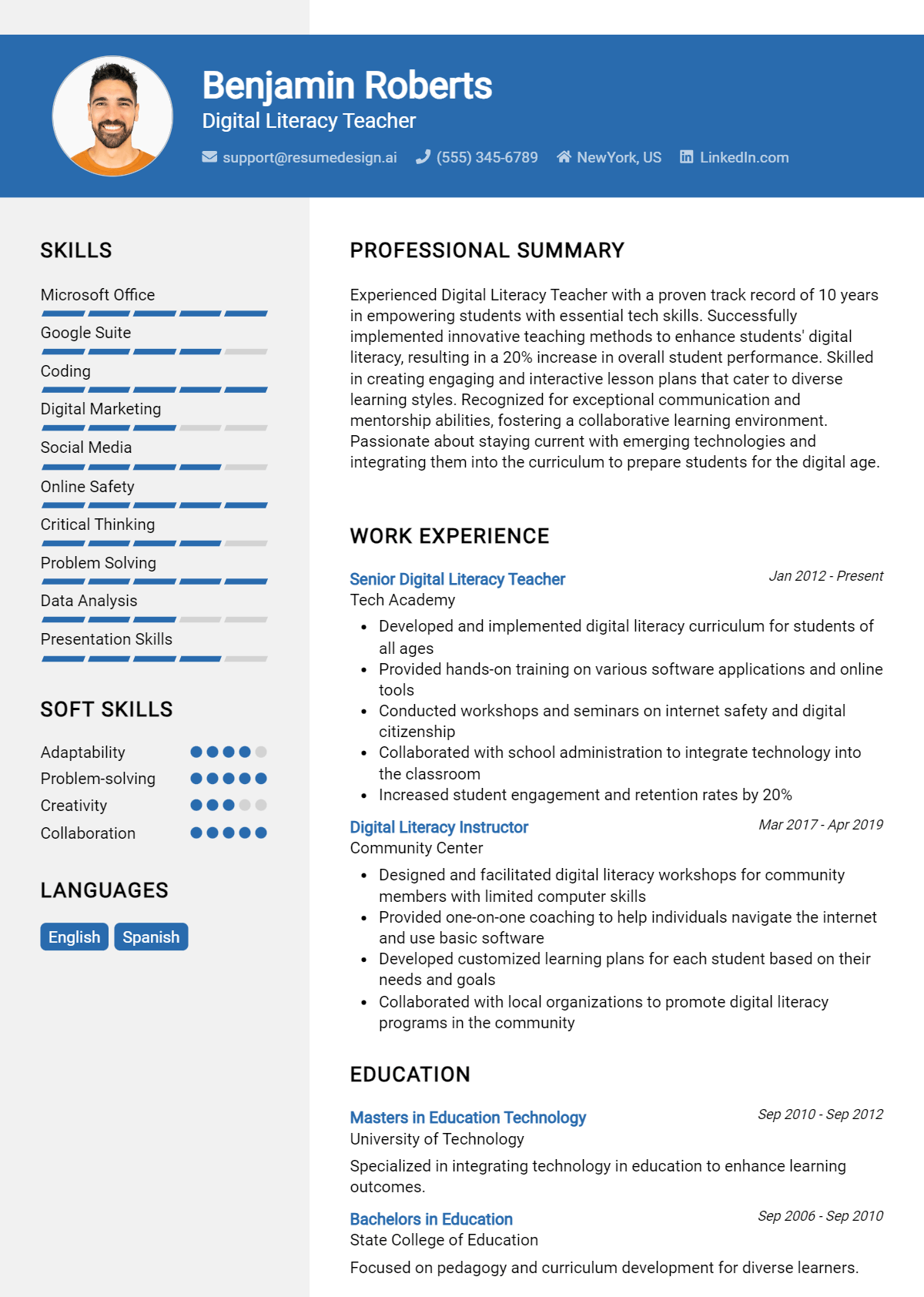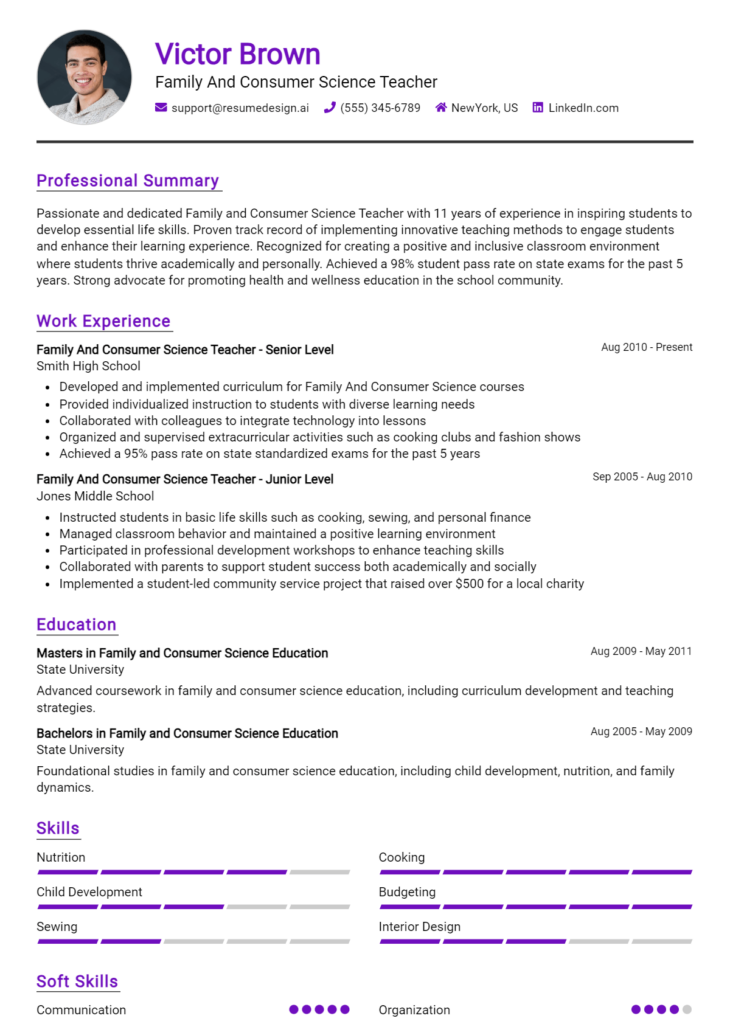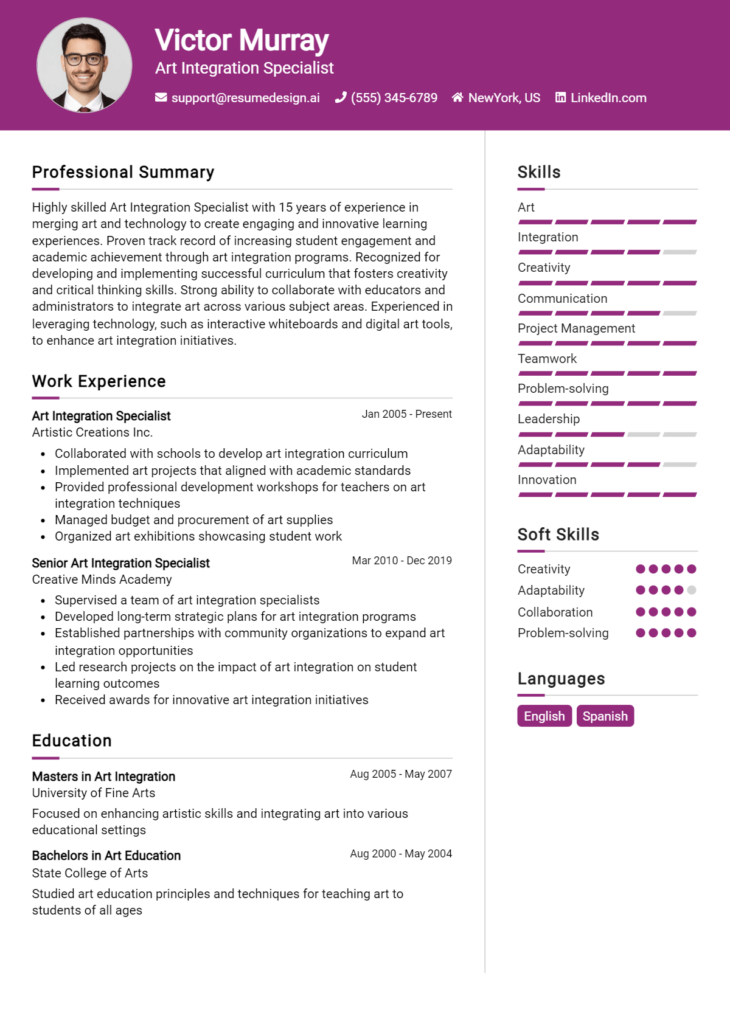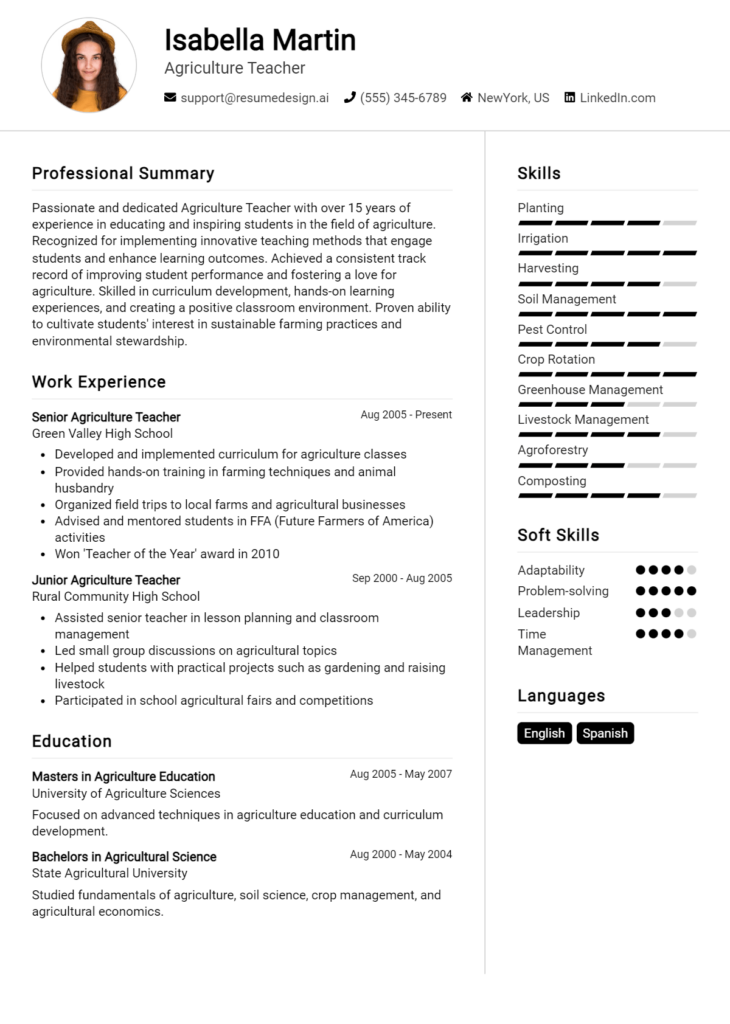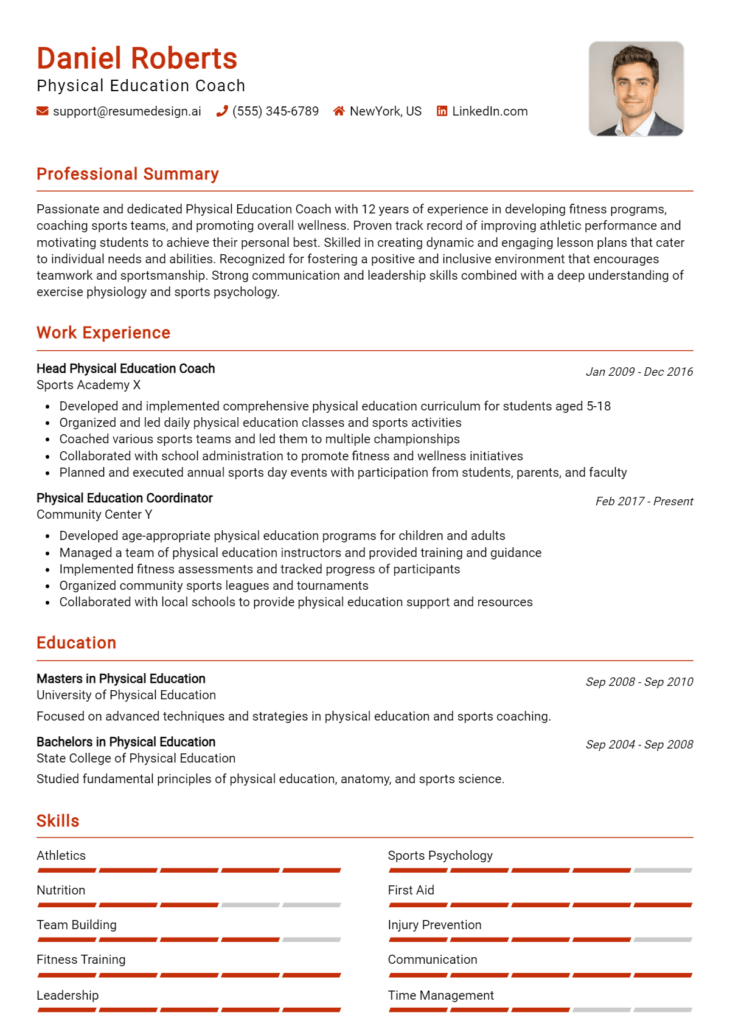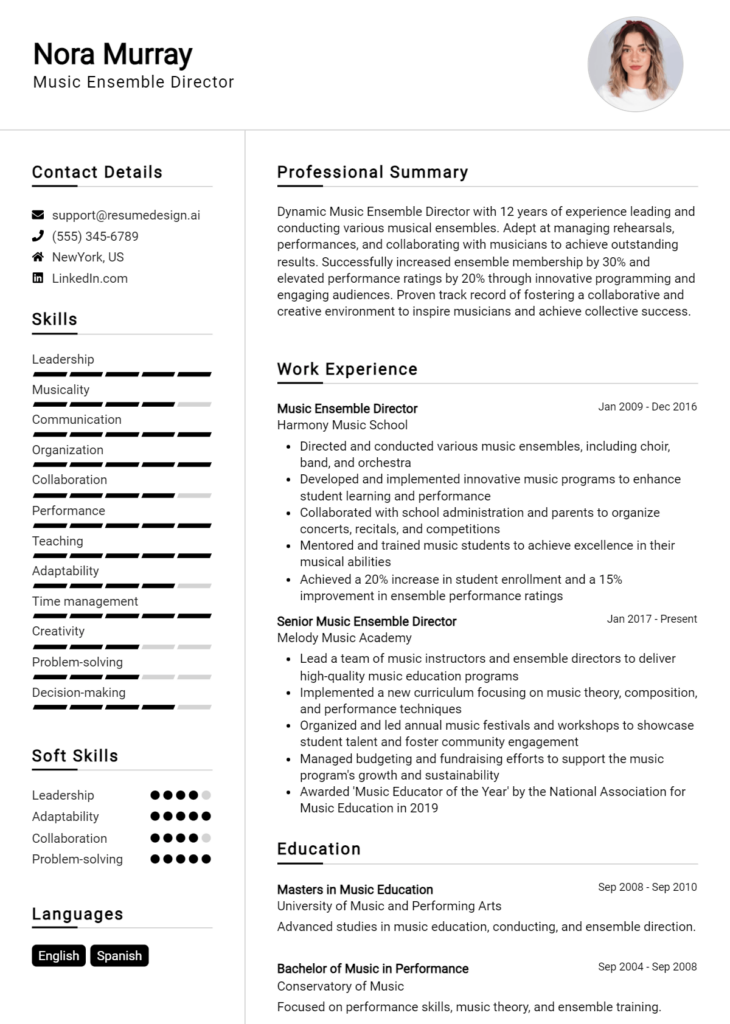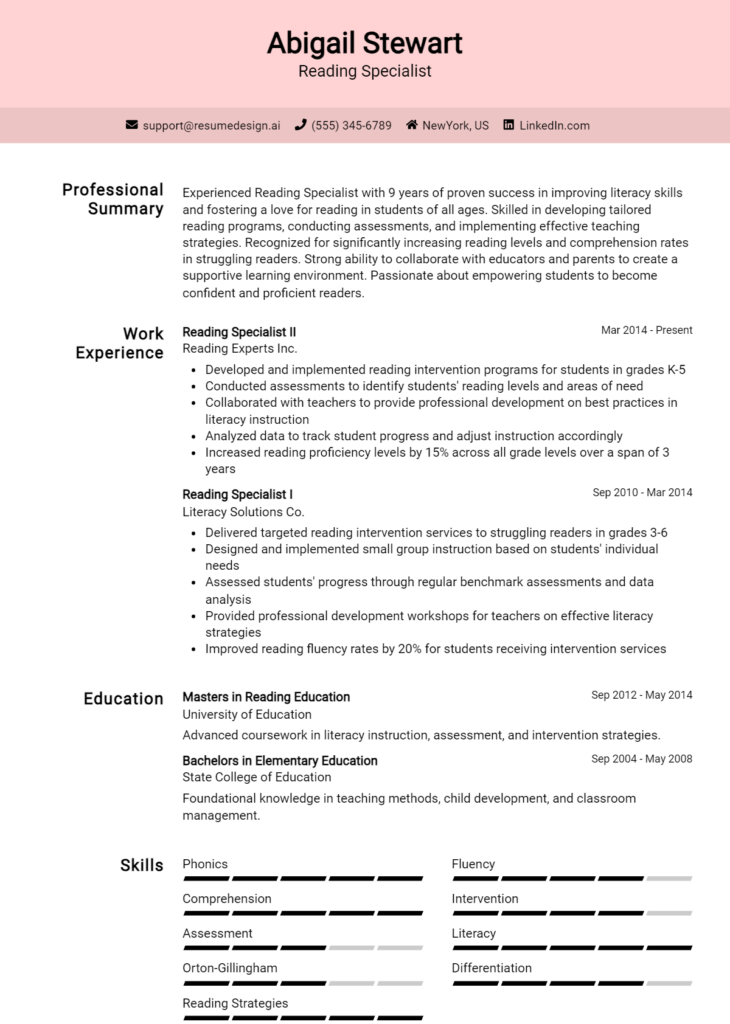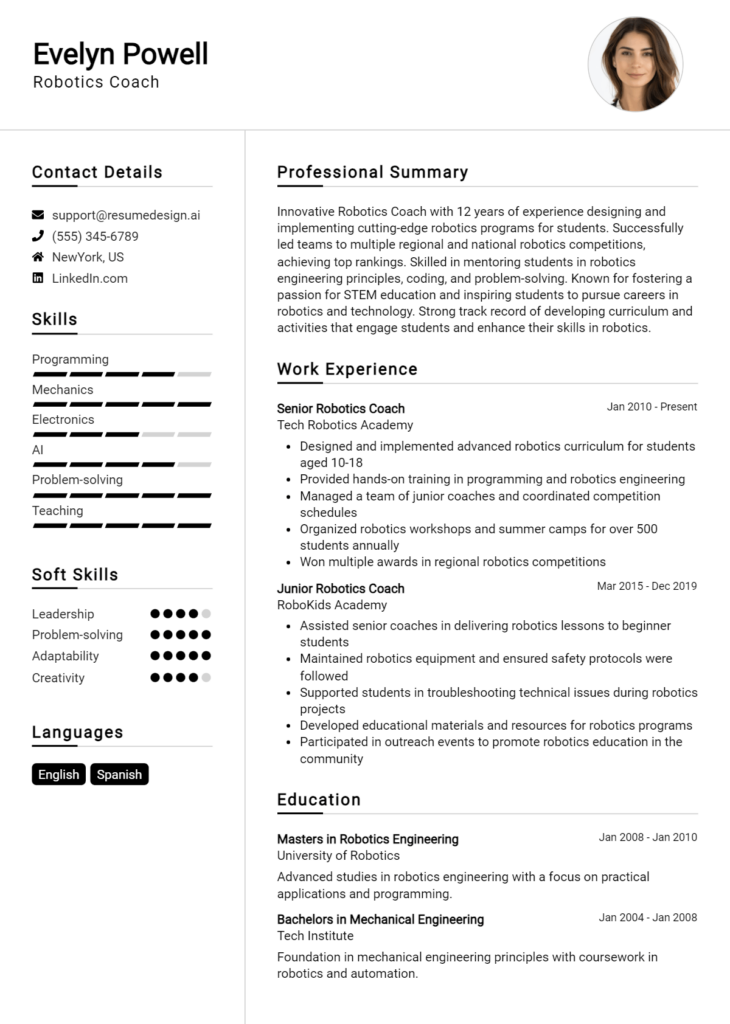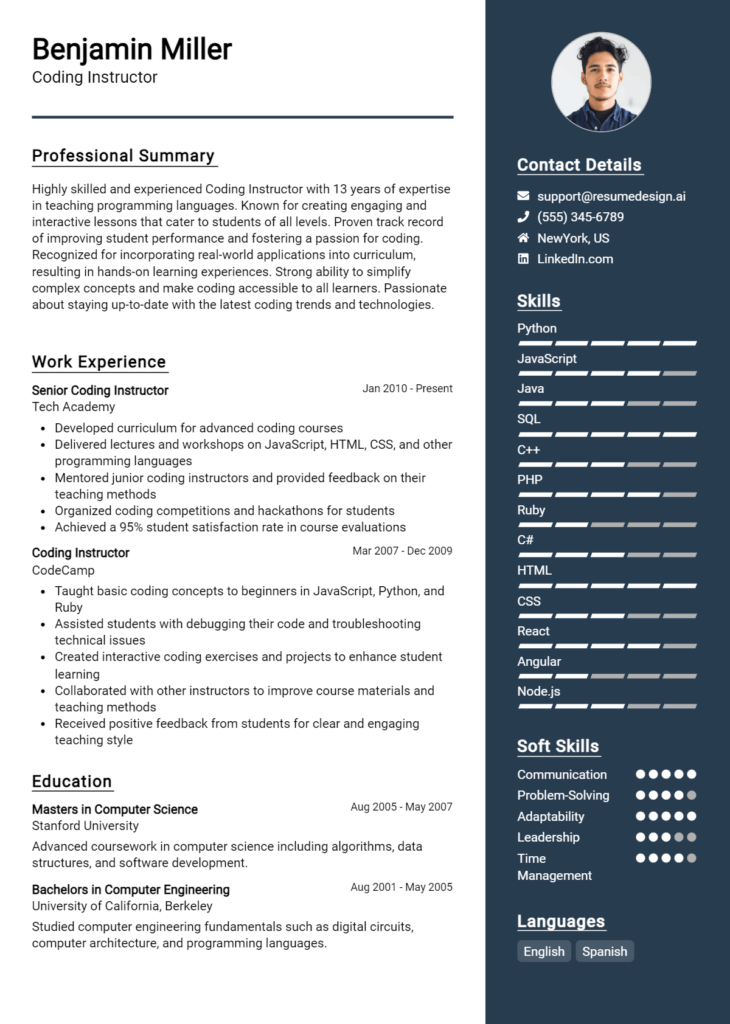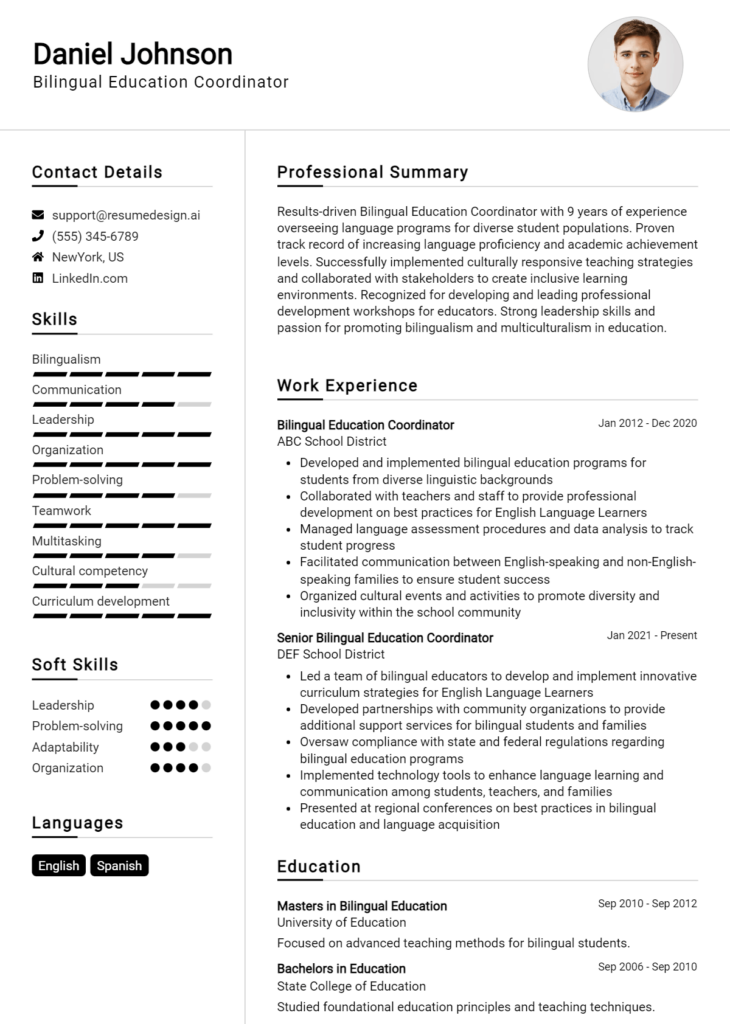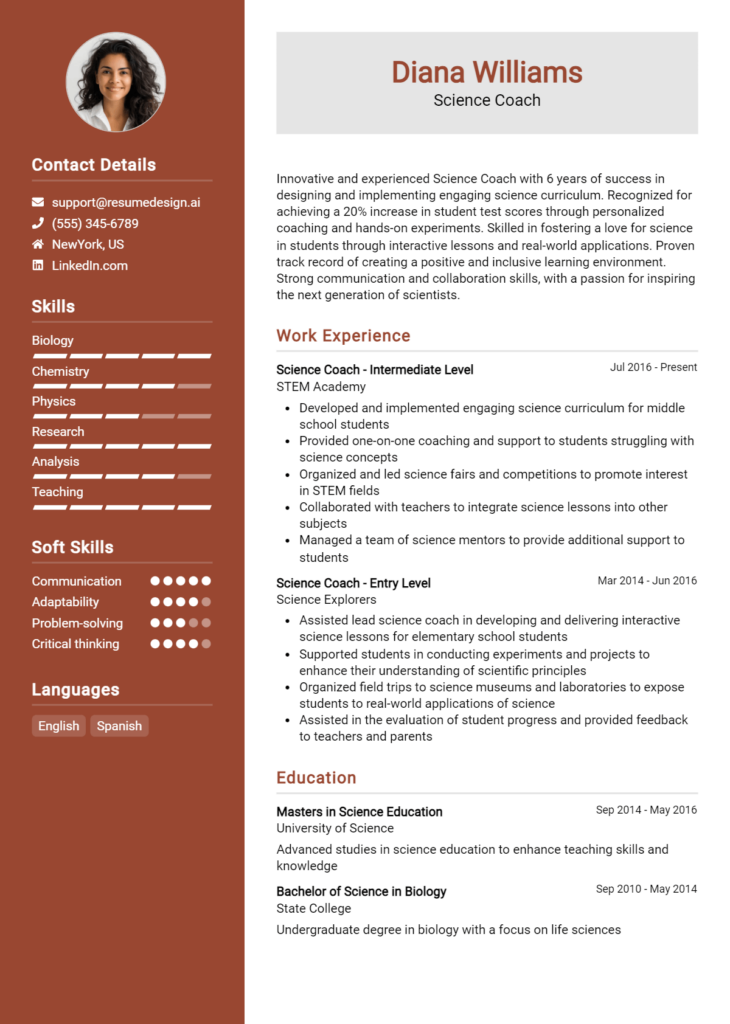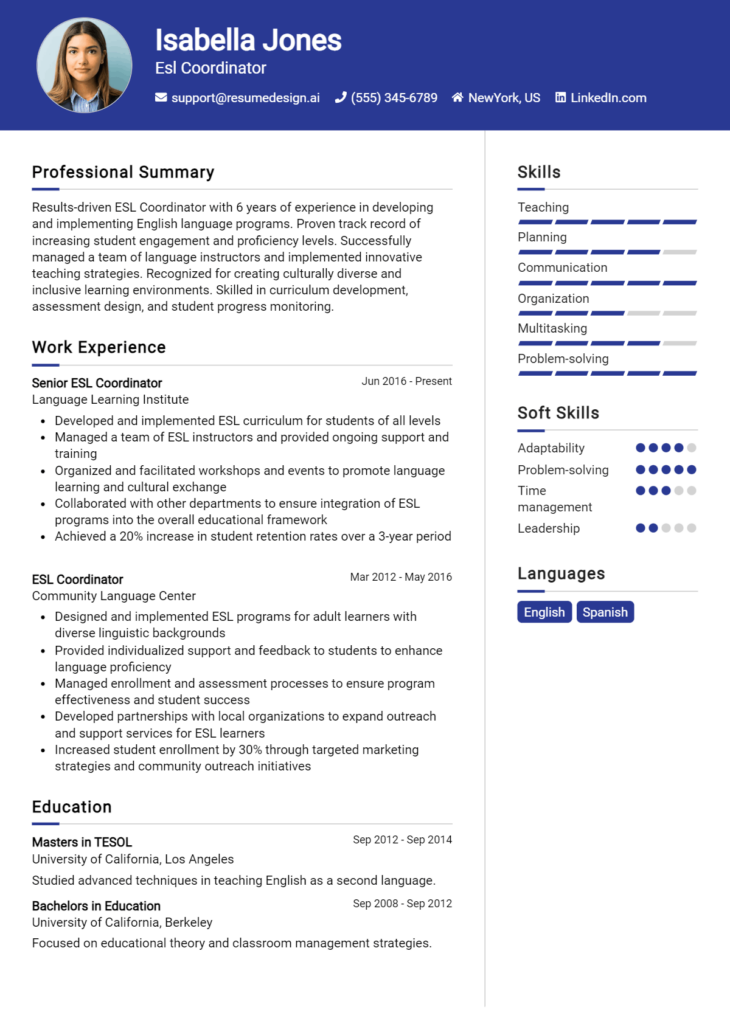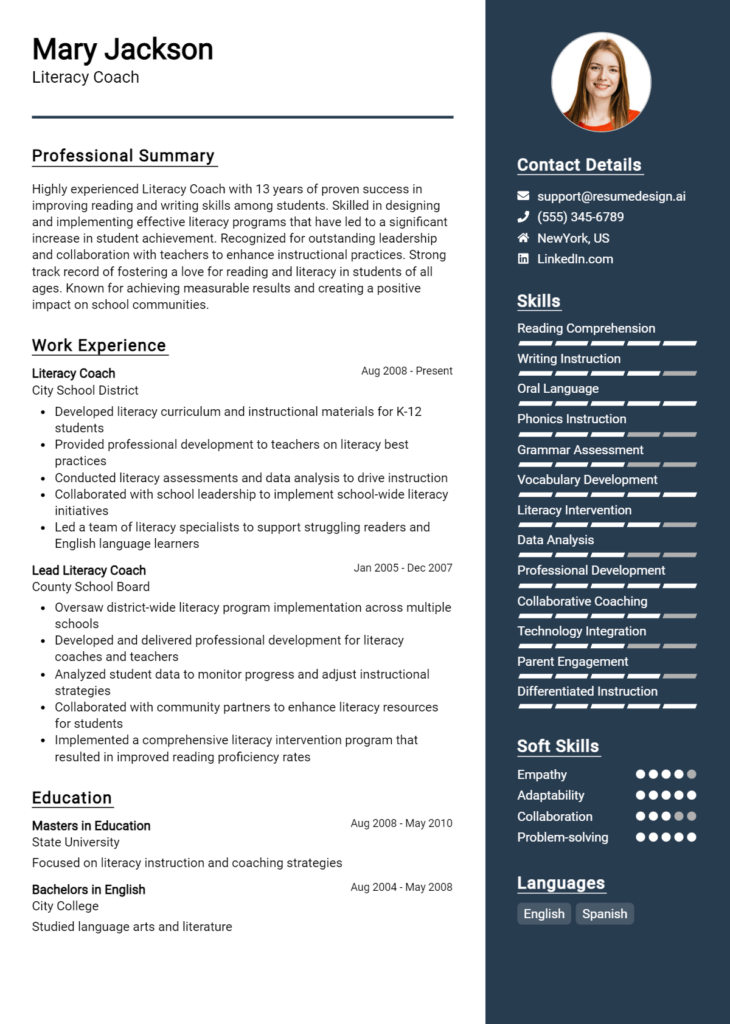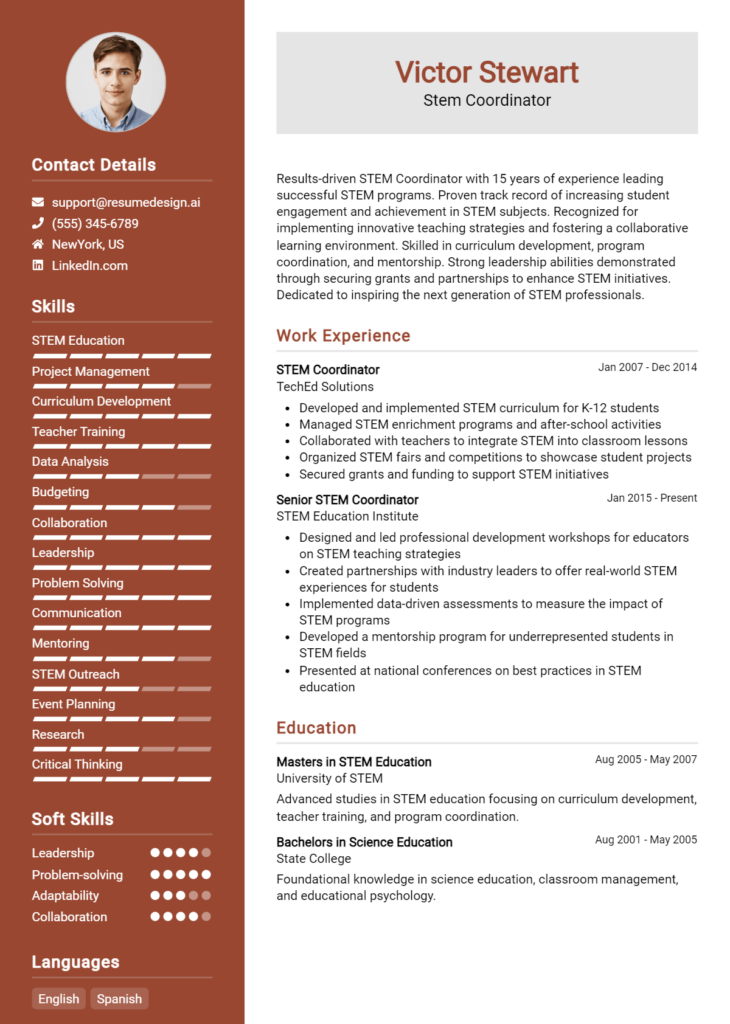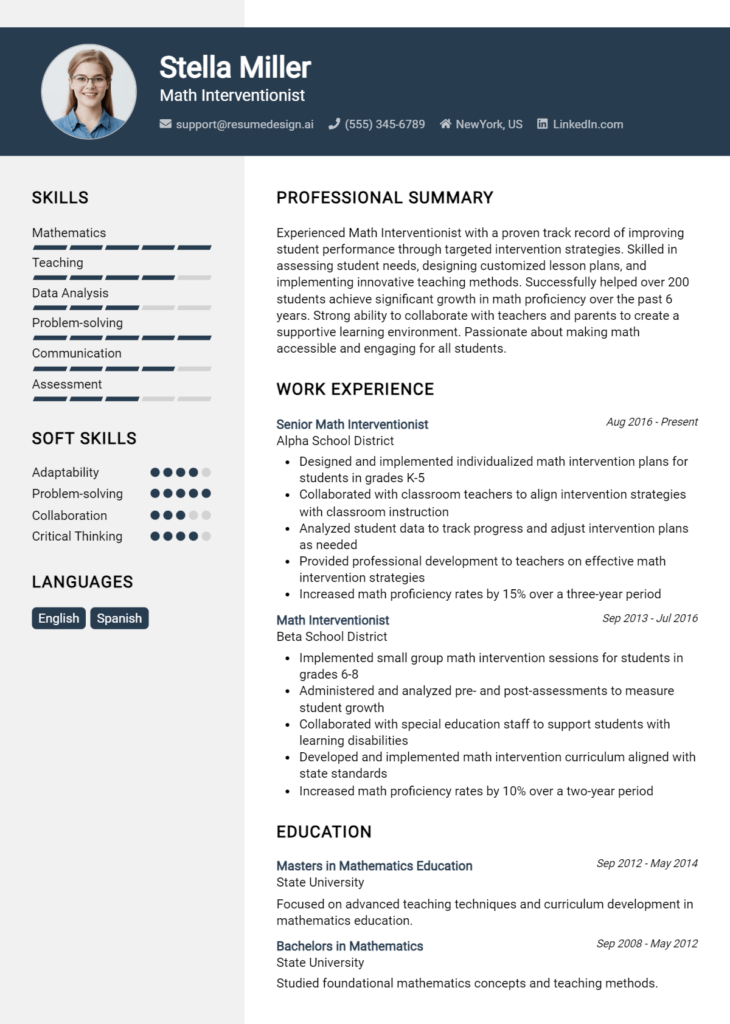Digital Literacy Teacher Core Responsibilities
A Digital Literacy Teacher plays a crucial role in equipping students with essential technology skills to navigate the digital world effectively. This position requires a blend of technical, operational, and problem-solving abilities, enabling the teacher to bridge various departments such as IT, curriculum design, and educational support. By fostering digital competence, the teacher contributes significantly to the organization's overarching educational goals. A well-structured resume can highlight these qualifications, showcasing the ability to enhance student engagement and learning outcomes.
Common Responsibilities Listed on Digital Literacy Teacher Resume
- Develop and implement digital literacy curricula tailored to diverse learning needs.
- Conduct hands-on training sessions on various digital tools and platforms.
- Assess student progress and provide feedback on digital skills development.
- Collaborate with other educators to integrate technology into classroom instruction.
- Stay updated with emerging technologies and educational trends.
- Design engaging learning materials that facilitate digital learning.
- Support students in troubleshooting technical issues related to digital tools.
- Organize workshops and seminars to promote digital literacy in the community.
- Monitor student engagement and adapt teaching strategies accordingly.
- Provide resources and guidance for responsible digital citizenship.
- Evaluate the effectiveness of digital literacy programs and make improvements.
High-Level Resume Tips for Digital Literacy Teacher Professionals
A well-crafted resume is essential for Digital Literacy Teacher professionals, as it serves as the first impression a candidate makes on potential employers. In an increasingly digital world, where technology and education converge, your resume must effectively showcase not only your teaching abilities but also your proficiency with digital tools and platforms. A strong resume reflects your skills, achievements, and dedication to fostering digital literacy in students, making it crucial to tailor it to the specific needs of each job application. This guide will provide practical and actionable resume tips specifically designed for Digital Literacy Teacher professionals, helping you stand out in a competitive job market.
Top Resume Tips for Digital Literacy Teacher Professionals
- Tailor your resume to match the job description by incorporating relevant keywords from the posting.
- Highlight your experience with digital tools and technologies relevant to the classroom, such as learning management systems or educational software.
- Quantify your achievements, such as the number of students you've taught or improvements in digital literacy assessment scores.
- Include certifications or professional development courses related to digital literacy or technology integration.
- Showcase your ability to create engaging, technology-enhanced lesson plans that promote digital literacy skills.
- Emphasize your experience in training or mentoring colleagues in the use of technology in education.
- Demonstrate your understanding of digital citizenship and online safety practices in the classroom.
- Utilize a clean, professional format that allows for easy readability and highlights key information effectively.
- Incorporate testimonials or recommendations from previous employers or colleagues that speak to your digital literacy expertise.
By implementing these tips, you can significantly increase your chances of landing a job in the Digital Literacy Teacher field. A thoughtful and polished resume will not only highlight your qualifications but also demonstrate your commitment to empowering students through technology, setting you apart as a strong candidate in this vital educational area.
Why Resume Headlines & Titles are Important for Digital Literacy Teacher
In the competitive field of education, particularly for a Digital Literacy Teacher, having a well-crafted resume headline or title is crucial. A strong headline serves as a powerful first impression, immediately capturing the attention of hiring managers and summarizing a candidate's key qualifications in a single impactful phrase. It should be concise, relevant, and directly related to the job being applied for, effectively showcasing the candidate’s expertise in digital literacy education. By highlighting essential skills and experiences upfront, a compelling resume headline can set the tone for the entire application, making it easier for recruiters to identify qualified candidates.
Best Practices for Crafting Resume Headlines for Digital Literacy Teacher
- Keep it concise: Aim for one impactful phrase that encapsulates your expertise.
- Be role-specific: Tailor your headline to reflect the specific job title you are applying for.
- Highlight key skills: Use keywords that are relevant to digital literacy education.
- Showcase achievements: Incorporate quantifiable accomplishments if possible.
- Maintain professionalism: Use formal language that conveys competence and expertise.
- Use action-oriented language: Start with strong verbs to convey energy and initiative.
- Avoid jargon: Ensure your headline is understandable to a broad audience.
- Revise and refine: Regularly update your headline to reflect your most current qualifications and experiences.
Example Resume Headlines for Digital Literacy Teacher
Strong Resume Headlines
Innovative Digital Literacy Educator with 5+ Years of Experience in Enhancing Student Engagement
Passionate Digital Literacy Teacher Specializing in Curriculum Development and Technology Integration
Experienced Educator Committed to Empowering Students Through Digital Skills and Critical Thinking
Weak Resume Headlines
Teacher Looking for a Job
Digital Literacy Teacher with Experience
Strong headlines are effective because they clearly communicate the candidate’s relevant strengths and experiences, making a direct connection to the needs of the hiring manager. They use specific language that stands out while encapsulating key qualifications in a memorable way. In contrast, weak headlines fail to impress because they lack specificity and do not effectively convey the applicant’s unique contributions or qualifications. Vague phrases simply blend in with countless other applications, offering little incentive for hiring managers to take a closer look.
Writing an Exceptional Digital Literacy Teacher Resume Summary
A resume summary is a critical component for a Digital Literacy Teacher, as it serves as the first impression a hiring manager receives. A well-crafted summary quickly captures attention by succinctly showcasing key skills, relevant experience, and notable accomplishments in the field of digital literacy education. This brief overview should be concise yet impactful, tailored specifically to the job at hand, allowing candidates to stand out in a competitive job market. By effectively summarizing their qualifications, teachers can demonstrate their suitability for the role and engage the reader to explore the rest of their resume.
Best Practices for Writing a Digital Literacy Teacher Resume Summary
- Quantify Achievements: Use specific numbers to highlight your impact, such as the percentage of students who improved their digital skills.
- Focus on Key Skills: Emphasize skills that are relevant to the job description, such as curriculum development, instructional technology, or online teaching methodologies.
- Tailor for the Job Description: Customize your summary to align with the specific requirements and responsibilities outlined in the job posting.
- Highlight Relevant Experience: Mention your years of experience in digital literacy education or related fields to establish credibility.
- Use Action-Oriented Language: Start statements with strong action verbs to convey a sense of achievement and proactivity.
- Keep it Concise: Aim for 3-4 sentences that encapsulate your qualifications without overwhelming the reader.
- Include Professional Development: Mention any certifications or training in digital literacy that enhance your expertise.
- Showcase Passion for Education: Convey your commitment to teaching and empowering students through digital literacy skills.
Example Digital Literacy Teacher Resume Summaries
Strong Resume Summaries
Dynamic Digital Literacy Teacher with over 8 years of experience in designing and implementing engaging technology curricula. Successfully increased student proficiency in digital tools by 40% over two academic years through innovative teaching methods and personalized instruction.
Results-driven educator with a proven track record of integrating technology into the classroom. Developed a comprehensive digital literacy program that improved student engagement by 30% and received recognition from the school board for excellence in teaching.
Enthusiastic Digital Literacy Teacher skilled in fostering a collaborative learning environment. Trained over 500 students in essential tech skills, achieving a 95% satisfaction rate in course evaluations and significantly enhancing digital competency among diverse learners.
Weak Resume Summaries
Experienced teacher looking to share knowledge about technology with students.
Digital Literacy Teacher with some experience in using computers and the internet.
The examples of strong resume summaries effectively showcase specific achievements, quantifiable outcomes, and relevant skills that align with the digital literacy teaching role. They provide clear evidence of the candidate's impact and expertise. In contrast, the weak summaries are vague and lack the necessary detail to capture the hiring manager's attention, ultimately failing to convey the candidate's qualifications or suitability for the position.
Work Experience Section for Digital Literacy Teacher Resume
The work experience section of a Digital Literacy Teacher resume is critical in demonstrating a candidate's qualifications and suitability for the role. This section provides prospective employers with a clear view of the applicant's technical skills, experience in managing teams, and ability to deliver high-quality educational products. By quantifying achievements and aligning previous roles with industry standards, candidates can effectively illustrate their impact in the digital literacy space, showcasing not just what they did, but how well they did it.
Best Practices for Digital Literacy Teacher Work Experience
- Highlight relevant technical skills such as proficiency in digital tools and software.
- Quantify your achievements with measurable outcomes, such as improvement in student performance percentages.
- Emphasize collaboration with other educators, administrators, and community stakeholders.
- Detail leadership roles taken in projects or initiatives related to digital literacy.
- Include certifications or training that enhance your expertise in the field.
- Use action verbs to convey a sense of proactivity and impact in your roles.
- Align your experience with current industry standards and educational technology trends.
- Tailor your work experience to reflect the specific requirements of the job you are applying for.
Example Work Experiences for Digital Literacy Teacher
Strong Experiences
- Developed and implemented a digital literacy curriculum that increased student engagement by 40% over two academic years.
- Led a team of educators in a district-wide initiative to integrate technology into classroom instruction, resulting in a 25% improvement in standardized test scores.
- Facilitated professional development workshops for 50+ teachers, enhancing their digital tool usage and collaboration skills, which improved overall teaching effectiveness.
- Managed a budget of $10,000 for the acquisition of educational technology resources, ensuring optimal utilization and alignment with curriculum goals.
Weak Experiences
- Taught students about technology in a general sense.
- Helped colleagues with their technology needs without specific outcomes.
- Participated in various meetings regarding digital literacy.
- Assisted in classroom activities related to computers.
The examples provided illustrate a clear contrast between strong and weak experiences. Strong experiences are characterized by specific achievements, quantifiable results, and demonstrable leadership in digital literacy initiatives. They reflect a proactive approach and a clear impact on student outcomes and collaboration efforts. In contrast, weak experiences tend to be vague, lacking specific details, outcomes, or a clear demonstration of the candidate's contributions, thus failing to effectively communicate the value they bring to the role of Digital Literacy Teacher.
Education and Certifications Section for Digital Literacy Teacher Resume
The education and certifications section of a Digital Literacy Teacher's resume is a critical component that showcases the candidate's academic achievements, relevant certifications, and commitment to continuous professional development. This section serves to reinforce the candidate's qualifications and readiness for the role, highlighting how their educational background aligns with the demands of teaching digital literacy. By providing details about relevant coursework, industry-recognized certifications, and specialized training, candidates can significantly enhance their credibility and demonstrate their dedication to fostering digital skills in their students.
Best Practices for Digital Literacy Teacher Education and Certifications
- Include degrees that relate directly to education, technology, or digital literacy.
- List industry-recognized certifications, such as Google Certified Educator or Microsoft Certified Educator.
- Provide details of relevant coursework that showcases expertise in digital tools and instructional design.
- Highlight any continuous learning efforts, such as workshops or online courses related to digital literacy.
- Ensure that all listed qualifications are current and reflect recent advancements in technology education.
- Use clear formatting to make the section easy to read and navigate for hiring managers.
- Consider including any specialized training in educational technology or digital pedagogy.
- Tailor this section to reflect the specific requirements and preferences outlined in the job description.
Example Education and Certifications for Digital Literacy Teacher
Strong Examples
- M.S. in Educational Technology, University of Education, 2021
- Google Certified Educator Level 1, 2022
- Certificate in Digital Literacy Instruction, Online Teaching Institute, 2023
- B.A. in Communication Studies with a focus on Digital Media, University of Arts, 2019
Weak Examples
- Bachelor’s Degree in Sociology, University of Science, 2010
- Certification in Basic Computer Skills, 2005
- High School Diploma, 2008
- Outdated Microsoft Office Specialist Certification, 2010
The examples provided are considered strong because they directly align with the requirements of a Digital Literacy Teacher, showcasing relevant degrees and certifications that reflect current industry standards and practices. In contrast, the weak examples demonstrate a lack of relevance to the role, featuring outdated qualifications or degrees that do not emphasize the necessary skills and knowledge required for teaching digital literacy effectively.
Top Skills & Keywords for Digital Literacy Teacher Resume
As the digital landscape continues to evolve, the role of a Digital Literacy Teacher has become increasingly vital in equipping students with the necessary skills to navigate technology effectively. A well-crafted resume for this position should highlight both hard and soft skills, showcasing the candidate's ability to impart knowledge while also fostering a supportive learning environment. Highlighting relevant skills not only demonstrates the teacher's proficiency in technology but also their capability to engage and inspire students. This balance of skills is essential for crafting a compelling resume that stands out to potential employers.
Top Hard & Soft Skills for Digital Literacy Teacher
Soft Skills
- Communication
- Patience
- Adaptability
- Creativity
- Empathy
- Problem-solving
- Team Collaboration
- Time Management
- Critical Thinking
- Leadership
Hard Skills
- Proficiency in digital tools (e.g., Google Suite, Microsoft Office)
- Knowledge of coding languages (e.g., HTML, Python)
- Familiarity with educational technology (e.g., LMS platforms)
- Data analysis and interpretation
- Cybersecurity awareness
- Digital content creation
- Multimedia design skills
- Social media literacy
- Research and information literacy
- Understanding of digital citizenship principles
For a comprehensive guide on how to effectively showcase your skills and work experience, consider tailoring your resume to reflect these essential competencies.
Stand Out with a Winning Digital Literacy Teacher Cover Letter
I am excited to apply for the Digital Literacy Teacher position at [School/Organization Name], as advertised on [Where You Found the Job Posting]. With a strong background in education and a passion for empowering students with essential digital skills, I am confident in my ability to contribute positively to your team and help students thrive in today's technology-driven world. My experience in curriculum development and innovative teaching methods has equipped me to create engaging learning experiences that cater to diverse student needs.
In my previous role as a Technology Integration Specialist, I designed and implemented a comprehensive digital literacy program that served over 300 students from various backgrounds. This program not only focused on teaching fundamental skills such as internet safety, digital communication, and online research but also emphasized critical thinking and problem-solving through project-based learning. I utilized a variety of tools and platforms, ensuring that students were not only consumers of technology but also creators, preparing them for future academic and career challenges. My ability to foster an inclusive and supportive classroom environment has been instrumental in encouraging student participation and collaboration.
I am particularly drawn to [School/Organization Name] because of its commitment to integrating technology into the curriculum and its focus on preparing students for a rapidly evolving digital landscape. I admire your innovative approach to education and would love the opportunity to contribute my expertise in digital literacy to further enhance your program. By leveraging my skills in instructional design, assessment, and technology integration, I aim to inspire students to become confident digital citizens who can navigate and utilize technology effectively and responsibly.
Thank you for considering my application. I look forward to the opportunity to discuss how my experience and vision align with the goals of [School/Organization Name]. I am eager to share my ideas for fostering digital literacy in your students and contributing to a collaborative and forward-thinking educational community.
Common Mistakes to Avoid in a Digital Literacy Teacher Resume
When crafting a resume for a Digital Literacy Teacher position, it's essential to present your skills and experience in a clear and impactful way. However, many candidates make common mistakes that can hinder their chances of landing an interview. By being aware of these pitfalls, you can create a more effective resume that highlights your qualifications and demonstrates your suitability for the role. Here are some frequent missteps to avoid:
Lack of Specificity: Failing to provide specific examples of your teaching methods or technologies used can make your resume vague. Instead, detail the tools and strategies you employed to enhance digital literacy.
Ignoring Keywords: Not incorporating relevant keywords from the job description can lead to your resume being overlooked by applicant tracking systems (ATS). Make sure to align your language with the job posting.
Excessive Length: Submitting a lengthy resume can overwhelm hiring managers. Aim for a concise one to two-page document that highlights the most relevant experiences and skills.
Neglecting Professional Development: Omitting information about professional development courses or certifications related to digital literacy can make you seem less committed to your field. Always include relevant training or workshops.
Poor Formatting: Using inconsistent formatting or fonts can detract from the professionalism of your resume. Stick to a clean, organized layout with consistent headings and bullet points.
Lack of Quantifiable Achievements: Failing to include quantifiable achievements can weaken your impact. Use metrics to showcase your effectiveness, such as improved student engagement or test scores.
Using Generic Language: Employing clichés and generic phrases can make your resume blend in with others. Instead, use clear, impactful language that reflects your unique contributions and experiences.
Overlooking Soft Skills: While technical skills are vital, neglecting to mention soft skills like communication, adaptability, and teamwork can be a missed opportunity. Highlight how these skills enhance your teaching effectiveness.
Conclusion
As a Digital Literacy Teacher, your role is pivotal in equipping students with essential skills to navigate the digital world. You focus on teaching students how to effectively use technology, understand online safety, and develop critical thinking skills for evaluating digital content. Emphasizing the importance of digital citizenship, you instill a sense of responsibility and ethical behavior in students as they engage with technology.
In the evolving landscape of digital education, staying updated on the latest tools and pedagogical strategies is crucial. Your resume should reflect not only your teaching experience but also your proficiency with various digital tools and your commitment to fostering a safe and inclusive online environment.
Now is the perfect time to review your Digital Literacy Teacher resume. Ensure that it highlights your relevant skills, experiences, and accomplishments in a clear and compelling manner. Consider utilizing resources such as resume templates to give your resume a professional look. You can also explore the resume builder for a user-friendly way to create a tailored resume that stands out.
Additionally, check out resume examples to find inspiration and see how other Digital Literacy Teachers present their qualifications. Don’t forget the importance of a strong cover letter; access cover letter templates to craft a compelling introduction that complements your resume.
Take action today to ensure that your resume reflects your capabilities and passion for teaching digital literacy. A polished and professional resume can open doors to new opportunities in your teaching career!

